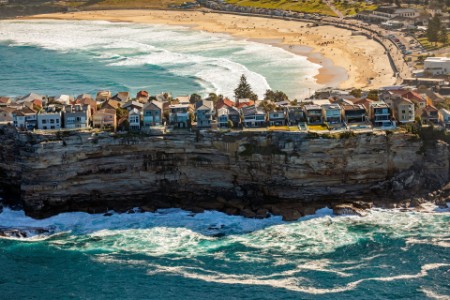On a sector basis, New Zealand largely mirrors global results, with high-emission industries, like energy, materials and buildings, leading in both coverage and quality as these companies tackle the decarbonisation challenge. In contrast, in Australia, the energy sector trails third last in quality. The top three sectors are banks, insurance and other financial institutions, likely as a result of the sector’s efforts to meet the pending requirements of the Australian Prudential Regulation Authority’s (APRA) CPS 230 resilience framework.
Getting ready for International Sustainability Standards Board (ISSB) standards
This year, the Barometer assessed whether companies are ready to adopt the IFRS S2 Climate-related Disclosures. This is of particular interest in Australia, where Treasury intends to be an early adopter of climate reporting requirements that align with the new ISSB standards. Australia’s largest listed and unlisted companies, financial institutions and those currently reporting under the National Greenhouse and Energy Reporting (NGER) Act will be captured for annual reporting periods on or after 1 January 2024.
This will make Australia one of the first jurisdictions in the world to adopt IFRS S2, requiring participants to capture additional requirements over and above the TCFD’s recommendations. New requirements will include assurance of disclosures, initially focussing on emissions and governance-related disclosures, and expanding to reasonable assurance of all disclosures by FY28 for the largest entities.
The Barometer finds Australian companies are beginning to prepare for this reality, with ISSB coverage slightly ahead of the average global performance. However, the results suggest many companies still have a long way to go. The mandate to disclose the financial impact of climate change, and decarbonisation risks and opportunities will require sustainability data to be sufficiently robust to withstand internal and external audit – and available within much more pressing timeframes.
For most organisations, this represents a significant advancement along the sustainability reporting maturity curve.
Scenario planning is becoming increasingly complex
IFRS S2 requires companies to explain the resilience of their strategy and business model to both physical and transition risks and opportunities. To achieve this, IFRS S2 mandates that companies conduct climate-related scenario analysis to evaluate their climate resilience – and that this analysis must be reflected in both financial reporting and strategy development.
The intention is that the results of scenario analysis will give companies deeper insight into how they can fine-tune their overall strategies and business models to enhance risk management procedures that are fit to tackle climate change challenges. To this point, if scenario analysis is not being used as part of strategy development, IFRS S2 disclosure requires organisations to explain why the scenario is not relevant for setting strategy.
Globally, 58% of companies analysed are conducting scenario analysis – up from 49% in the previous year. However, only 41% of these are conducting quantitative analysis. Australia is on par with these global trends – although levels of quantitative analysis are lower at 36%. In New Zealand, the proportion of companies undertaking scenario analysis is significantly lower at 36%, although quantitative assessment makes up a large portion (28% of total companies).
Australia is also ahead of the global average at disclosing financial impacts qualitatively – but not quantitatively.
Credible, detailed carbon transition action plans are required
This year, for the first time, the Barometer focused on the disclosure of decarbonisation strategies or transition plans. We asked companies whether they have a time-bound action plan that clearly outlines how the entity will pivot its existing assets, operations and entire business model towards a trajectory that aligns with the latest climate science recommendations to limit global warming to 1.5°C.
Having a credible transition plan is one of the key focus themes under both the TCFD’s recommendations and from an ISSB readiness point of view. The Barometer found that around 50% of global and local companies analysed have disclosed a timeline, roadmap and targets aimed at achieving net zero strategy. However, these disclosures typically lack the detailed action plans and capital allocations required to convince stakeholders that a decarbonisation strategy is credible and likely to be successful. Simply stating a target and noting actions to achieve that target are no longer sufficient. Reporting must also demonstrate that capital has been allocated to all carbon transition activities.


